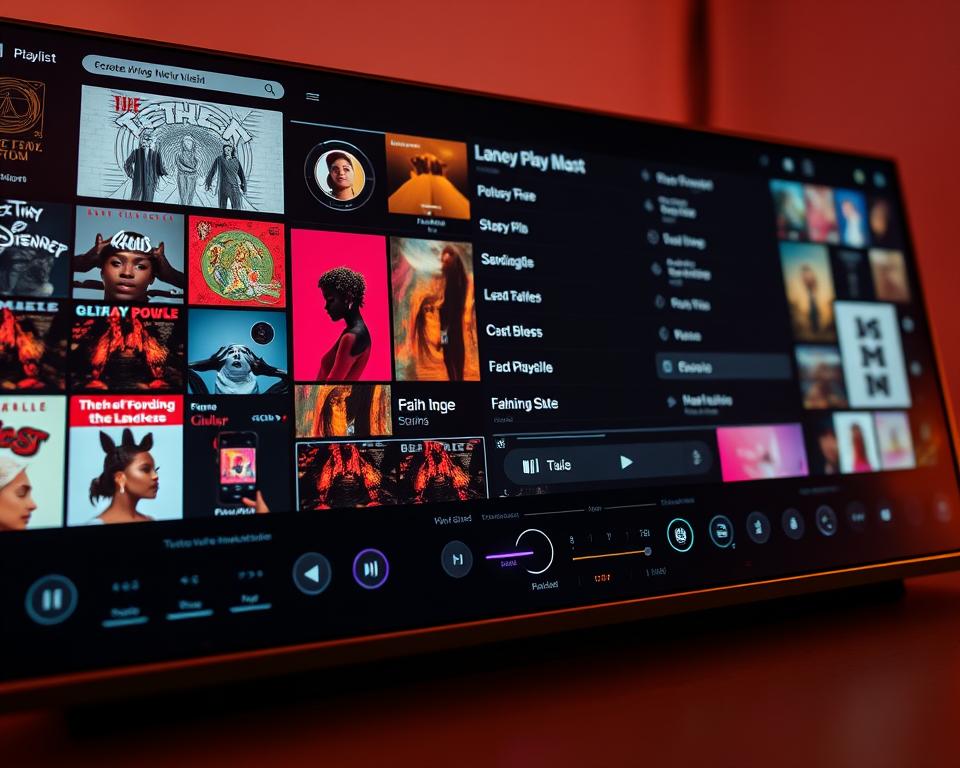Anúncios
digital diversity qa can sound like a buzzword, but what does it truly mean for your product and team?
You’ll get a clear view of what this approach covers and why it matters for product quality, user trust, and long-term business health. Studies link inclusive leadership and balanced team dynamics to better innovation and fewer missed defects.
In this guide, you see how inclusion connects with everyday testing—from requirement reviews to exploratory sessions—without promising one-size-fits-all fixes. You’ll find evidence-based insights, practical workflows, and cultural practices that help teams in the U.S. and around the world adapt responsibly.
Use these pages as a living reference: learn fast tactics, weigh benefits against risks, and consult accessibility, legal, or HR experts when rules or compliance matter. This is about steady cultural work, not a checklist.
Introduction: Why digital diversity qa matters right now
In fast-moving U.S. markets, thoughtful inclusion in testing helps teams spot risks before they reach users. You operate under shifting accessibility rules, privacy expectations, and state policies. That makes practical, plain approaches essential for steady product growth and trusted outcomes.
Anúncios
Context and relevance for U.S. teams
U.S. companies face rapid release cycles and rising user expectations. A mixed team brings more viewpoints into planning and development. This helps catch edge cases tied to region, language, age, and connectivity.
How this guide helps you balance innovation and responsibility
This guide turns principles into steps you can add to sprints, reviews, and test planning. You get clear methods to route high‑impact risks to the right roles so delivery stays fast and focused.
- Practical context: actions for fast release cycles and changing rules.
- Inclusive testing: ways to reduce blind spots for varied people and users.
- Balanced view: improve innovation while respecting accessibility and privacy.
Apply these ideas thoughtfully and consult legal or accessibility experts when policy or compliance is involved. The aim is steady improvement, not quick fixes.
Defining diversity and inclusion in QA, simply and clearly
Start with a simple rule: diversity describes the mix of people on your team, while inclusion is how you let every voice shape testing.
Diversity as the mix; inclusion as how the mix works together
Think of diversity as the range of abilities, age, gender, sexual orientation, socioeconomic status, culture, and language on your roster.
Inclusion means making sure those differences influence your decisions, not just exist on paper.
Dimensions that impact testing
- Age & disability: affect input methods, accessibility checks, and error recovery steps.
- Gender & sexual orientation: shape realistic names, content labels, and privacy choices.
- Socioeconomic status, culture, language: guide localization, payment options, and readability thresholds.
Turn definitions into workplace processes: decide who writes scenarios, who reviews them, and how voices influence acceptance criteria. These ways reduce blind spots, improve outcomes for users, and make inclusive quality part of your workforce practices.
Proven business value: innovation, revenue, and better user experiences
Recent studies link a broader mix of leadership backgrounds to measurable gains in innovation and revenue.
What studies show about diverse teams and innovation revenue
Clear, credible findings: a Boston Consulting Group analysis found companies with more varied management reported about 19% higher innovation revenue.
McKinsey found firms in the top quartile for racial/ethnic representation were 35% more likely to outperform on profitability. Top gender representation correlated with a 15% higher chance of outperformance.
From numbers to practice: why correlation needs cultural change
Correlation is not causation. Those gains appear when companies back representation with everyday practices that let new ideas surface.
- Evidence you can act on: share airtime in meetings and use structured test reviews so many voices inform product choices.
- Practical steps: pair senior experts with newer team members to widen idea pipelines and support steady growth.
- Measure both levels: track company metrics like promotion patterns alongside product metrics like task completion and error rates.
- Make checklists concrete: add a sign-off item that asks whose needs might be missing before release.
Keep the business case honest: this supports investment, but real success comes from sustained cultural and operational change that embeds those ideas across the company and market-facing work.
digital diversity qa in action: workflows, coverage, and user empathy
Start with mapping who your real users are and what limits they face in daily use.
Expand coverage: build a lightweight process to map top segments and list scenarios tied to age, disability, language, and connectivity. Use this as a living checklist that guides testing each sprint.

Expand test coverage to reflect real users’ experiences
Include accessibility checks: screen‑reader flows, keyboard navigation, color contrast, and captions. Add language tests for plain English, bilingual prompts, and clear error text for second‑language users.
Designing tests for accessibility, language, and device diversity
- Expand device and network coverage to older phones, low‑RAM models, and 3G conditions.
- Schedule exploratory sessions where testers role‑play constraints like one‑handed use or limited literacy.
- Rotate testers across features so developers and testers share context and avoid tunnel vision.
“Empathy in testing reveals real friction faster than theoretical checklists.”
Document simple solutions in a pattern library and run short retros to keep the process lean. Track wins like fewer support tickets and clearer user guidance to prove value over time.
People practices: building and supporting diverse QA teams
Build hiring and workplace habits that make your testing team stronger, fairer, and more resilient. Start with small, practical steps that remove barriers and reward clear skills.
Reduce bias in hiring
Rewrite job ads to remove exclusionary language and list only job-relevant skills. Widen your sourcing to colleges, community groups, and networks that reach underrepresented applicants.
Use diverse interview panels and standardized questions to keep evaluations fair. Where legal, anonymize resumes and align management expectations with structured rubrics that value potential over pedigree.
Everyday inclusion and equitable growth
Create ERGs with time and budget to advise on hiring, onboarding, and training needs. Publish transparent decision logs for promotions and project assignments so employees see how choices are made.
- Review pay equity and correct gaps as part of regular company governance.
- Provide recurring training on unconscious bias, conflict resolution, and accessible communication.
- Replace “culture fit” with values-and-skills alignment and build safe feedback loops for concerns.
These practices help your workforce attract and keep skilled people while reducing bias in hiring and ongoing management.
Testing techniques to catch bias early—across software and play
Early testing that mirrors real lives helps you spot unfair outcomes before they reach users. Start small: add concrete scenarios to sprints and run short play sessions that mimic real constraints.
Scenario libraries for socioeconomic, age, and ability range
Create a scenario library that covers socioeconomic status, age, gender, and ability. For each case, record expected behaviors and likely failure modes.
- Examples: low-bandwidth checkout, older-device crashes, limited-literacy flows.
- Checklists: spot bias in sampling, thresholds, defaults, and personalization logic.
- Adversarial tests: ask how edge cases might downrank or exclude people.
Entertainment play: content rating, latency, and safety
Design tests for content ratings, chat filters, and reporting tools across age groups.
Evaluate latency fairness by simulating different bandwidth and ping ranges so multiplayer matchmaking stays equitable.
Run community safety drills to validate abuse reporting, moderator escalation, and user feedback loops.
Real-world case: framing impact questions early
Study the UK A‑Level algorithm issue and practice asking, “Who is harmed by this rule?” A more varied team would have raised socioeconomic concerns early.
Pair developers and testers to review data assumptions and user experience impacts together. Document solutions like alternate text patterns, rate-limit settings, and appeals flows so fixes reappear where needed.
“Ask who bears the burden of errors, then choose kinder defaults.”
Measure what matters: processes, metrics, and continuous improvement
Choose a small set of processes and outcome metrics that link inclusive practices to visible quality gains. Start with three to five indicators your teams can review each sprint.
Measure process health with simple signals: review participation rates, time to fix accessibility issues, and backlog aging for inclusive fixes. Track testing outcomes like assistive tech pass rates, localization defects per release, and task completion for varied user groups.
- Management reviews: examine promotion and pay patterns alongside product outcomes and adjust development plans.
- Dashboards: blend business and product views while protecting personal data.
- Skills growth: short learning sessions and pair-testing rotations, then log what worked in your solutions library.
Prune metrics quarterly. Retire measures that don’t inform decisions. Run lightweight experiments—smaller review groups or pre-merge accessibility checks—and compare before/after results to improve productivity.
Celebrate success responsibly: credit the process and the people, document the steps, and plan the next cycle of growth.
Conclusion
Close by choosing a few durable practices that keep bias visible, user needs central, and teams aligned over time.
Start with a short checklist you can adopt without overloading your team. Commit to routine testing of edge cases, varied devices, and people with different abilities so your software experience improves steadily.
Schedule brief reviews that ask who might be excluded and how to reduce risk. Remember that hiring is only one part of change; fair processes, open communication, and time for skill building sustain results.
Involve management early when policy, privacy, or safety questions appear and consult specialists for accessibility, HR, or legal matters. Align business measures with humane goals and credit contributors across teams and companies.
Inclusive testing is ongoing: apply practices at a pace your workforce can maintain, balance productivity with well‑being, and use measured improvements to guide growth and solutions.



